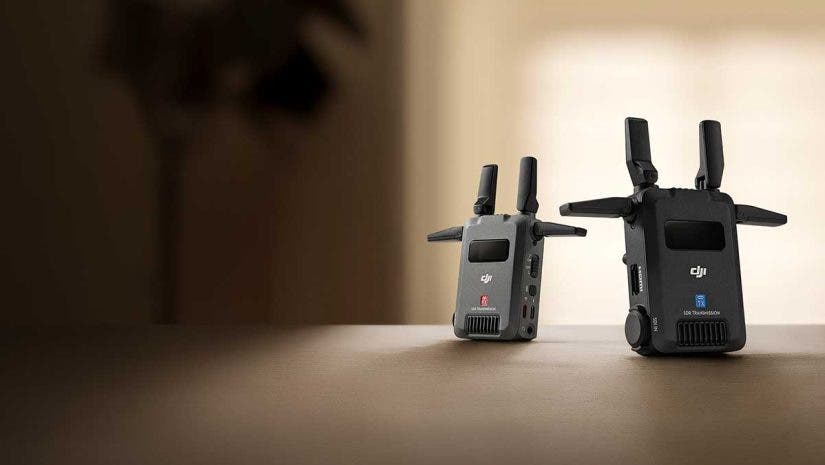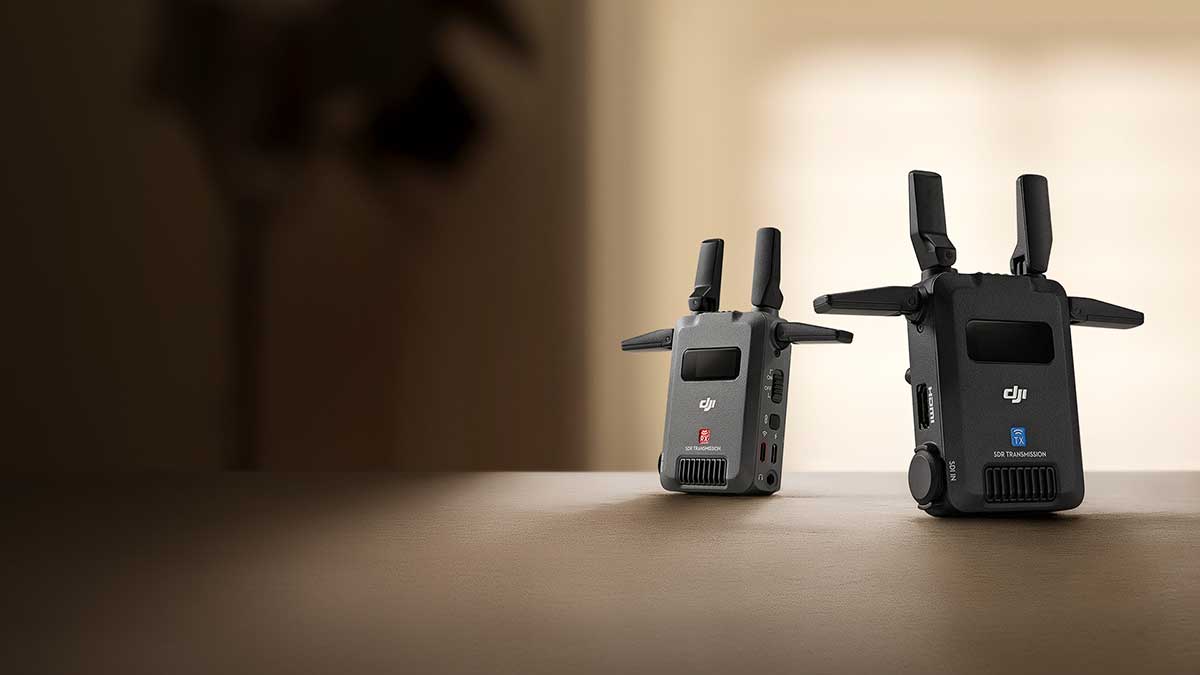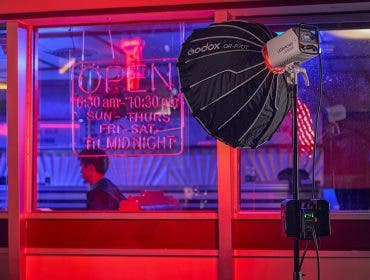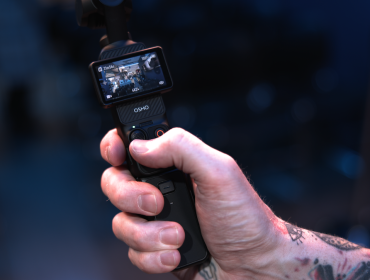Today marks the introduction of DJI’s brand-new SDR Transmission line of Transmitters and Receivers. The DJI SDR Transmission system leverages both SDR (Software-Defined Radio) and Wi-Fi video transmission technologies into an easy-to-use solution that delivers unparalleled video transmission performance.
In addition, the system also offers enhanced stability, superior penetration capabilities, and is more resistant to interference. Designed to work seamlessly with DJI’s own gimbal solutions and the newly updated DJI Ronin app, DJI SDR Transmission is the ideal video transmission and camera control solution that directors, cinematographers, videographers, and DIT teams tackling the most demanding video transmission workflows can depend on.
Key Specs of the DJI SDR Transmission:
- DJI SDR Transmission Transmitter and Receivers weigh approximately 145 g (antennas included)
- Supports 2.4 GHz, 5.8 GHz, and DFS frequencies
- Supports smartphone and tablet monitoring via physical as well as Wi-Fi connections
- Remotely adjust camera parameters such as aperture, shutter speed, and ISO, as well as trigger recording (on supported camera models)
- Multiple Monitoring Assistance Tools (via the DJI Ronin App)
- LUT, Peaking, Waveform, False Color
- Multiple Power Supply Options
- Directly powered by connected gimbal (supports DJI RS 4 Pro, DJI RS 4, and DJI RS 3 Pro)
- Industry-standard NP-F batteries
- Via PD-capable USB-C charger
- Up to 3 km or 10,000 ft Transmission Range
- SDR transmission distance increased by 650% vs Wi-Fi
- SDR transmission bit rate increased by 67% vs Wi-Fi
- SDR transmission latency improved by 30% vs Wi-Fi
- USB-C Port: Power and Gimbal Communication (supports DJI RS 4 Pro, DJI RS 4, and DJI RS 3 Pro)
- 3.5mm Stereo Jack: Supports one-on-one voice calls
- HDMI Input Port: Supports 1080p 60 FPS video input
- SDI Input Port: Supports 1080p 60 FPS video input
- USB-C Port: Firmware Update and Video Output as well as Power
- 3.5mm Stereo Jack: Supports one-on-one voice calls
- HDMI Output Port: Supports 1080p 60 FPS video and audio output
- SDI Output Port: Supports 1080p 60 FPS video and audio output
Biggest Features of the DJI SDR Transmission:
Unparalleled Transmission Range, Auto Frequency Hopping, and Robust Penetration
The DJI SDR Transmission system has a maximum transmission range of up to 3 km or 10,000 ft. This immense range allows users to cover a wide operating area and across a variety of dynamic filming scenarios.
It also can seamlessly and automatically hop across the 2.4 GHz, 5.8 GHz, and DFS frequency bands. In the event that environmental challenges and transmission interference occur, the system can automatically switch to the most optimal channel effortlessly.
Coupled with its unmatched signal penetration capabilities, the DJI SDR Transmission system can easily handle even the most challenging and demanding on-site live feed monitoring needs.
Full HD Image Quality with High Bit Rate/Low-Latency Transmission
Another key feature of the DJI SDR Transmission system is its ability to handle Full HD (1080p) live feeds at 60 FPS and a high bit rate of up to 20 Mbps. Combined with a minimal transmission latency of just 35 ms, the system ensures that remote monitoring and collaboration runs smoothly and efficiently.
Remotely Control Your Camera
In addition to video monitoring, DJI SDR Transmission also allows you to remotely adjust camera parameters such as aperture, shutter speed, and ISO, as well as trigger recording (on supported camera models) via the DJI Ronin app. Sony camera users can also access their camera’s Mirror Control mode via CEC control through an HDMI cable.
Supports an Unlimited Number of Receivers
When set to Broadcast Mode, each DJI SDR Transmitter can be connected to an unlimited number of DJI SDR Receivers. This allows video productions to provide concurrent access to the same high-quality remote monitoring experience to multiple collaborators while addressing the unique monitoring needs associated with their respective roles.
Metadata Transmission for Professional Use Cases
Metadata from mainstream cinema camera manufacturers like ARRI and RED can be transmitted via the DJI SDR Transmission system when an SDI connection is used, giving directors, cinematographers, and DIT teams real-time access to detailed shooting information.
Communicate With Voice Call
The DJI SDR Transmission system also supports one-on-one real-time communication between the receiver and transmitter, allowing members of the camera department and decision-makers to communicate seamlessly at any time.
Who Should Use the DJI SDR Transmission
The DJI SDR Transmission system is the ideal video transmission and remote control solution for anyone in video/film production (from directors, cinematographers, videographers, and DIT teams to other members in the camera department) who often finds themselves working in demanding and challenging shooting scenarios. For those already working within the DJI ecosystem, you’ll be glad to know that DJI SDR Transmission is designed to work seamlessly with DJI’s latest gimbal solutions (DJI RS 4 pro, DJI RS 4, and DJI RS 3 Pro) and the newly updated DJI ronin app.






